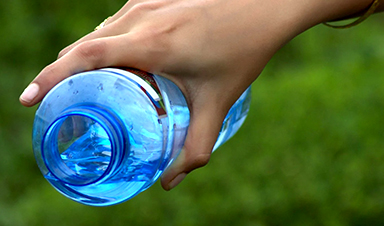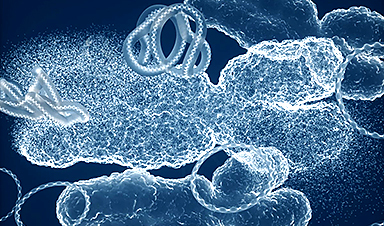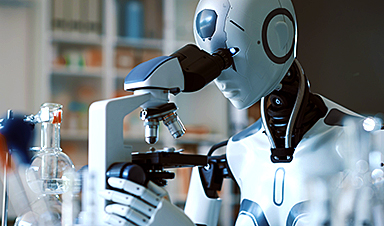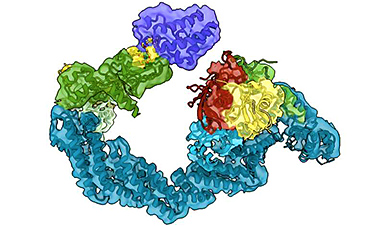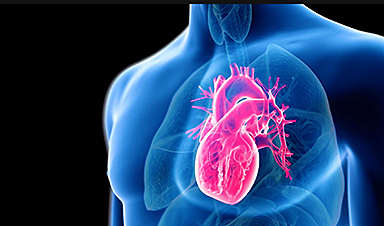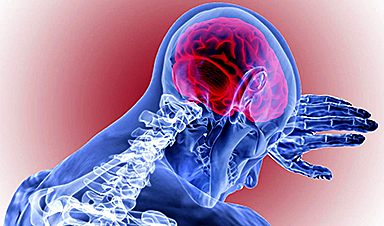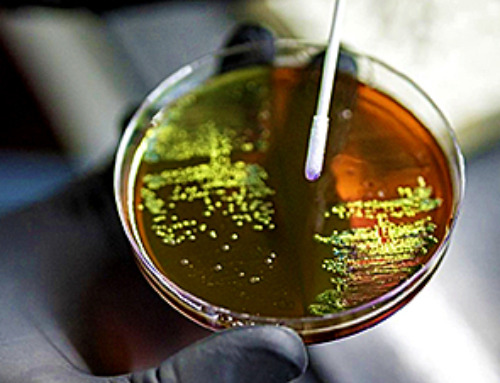In March 2020, Hannu Rajaniemi pivoted his biotech company Helix Nanotechnologies’ focus from cancer therapies to Covid-19 vaccines.
The role biotech start-ups can play in a pandemic
Rajaniemi originally co-founded Helix Nanotechnologies in Cambridge, Massachusetts in 2013 to develop cancer therapeutics, which was a personal mission: His mother got sick with and eventually passed due to metastatic breast cancer.
When the company pivoted to working on Covid-19 vaccines, he knew his start-up wouldn’t be one of the first vaccines out of the gate.
“That would have required billions in [Operation] Warp Speed funding,” Rajaniemi says. (HelixNano has received $6.4 million in total funding as of May, according to Crunchbase, from investors including Y Combinator, and has received grant money from Google billionaire Eric Schmidt’s Schmidt Futures.
“In this crisis, the role of a start-up is to pursue more technically challenging, second-generation approaches and find solutions that the less agile bigger players might miss,” he says.
While the first wave of Covid vaccines distributed in the United states from Pfizer/BioNTech, Moderna and Johnson & Johnson have to adapt their vaccines to new strains, HelixNano’s booster vaccine is designed to “provide much broader immunity,” he says.
“The reason we got into this … was that we were worried about mutated SARS-CoV-2 strains able to evade vaccine immunity,” Rajaniemi says. “That is exactly the scenario that is now playing out with the South African, Brazilian and other emerging variants.”
New vaccine technologies: Essentially ‘a zoom function and an amplify function’
Developing a vaccine that is resistant to virus mutations is “an extremely challenging problem technically,” Rajaniemi says.
But with the advantage of being able to build on all the knowledge scientists now have about the virus, HelixNano invented “two completely new vaccine technologies” for which they’ve filed for patents, according to Rajaniemi.
“Essentially, we have a ‘zoom’ function and an ‘amplify’ function for mRNA vaccines,” he says. (Both the Pfizer-BioNTech and Moderna vaccines are mRNA technology, as is Helix Nanotechnologies’ booster.)
“We can make vaccines both more targeted and more powerful than was previously possible,” says Rajaniemi.
The first technology Helix Nanotechnologies developed makes vaccines more accurate.
“Traditional vaccines are blunt instruments. You show the immune system a bit of the virus — like the spike protein that SARS-CoV-2 uses to infect cells — and [the body] generates antibodies against it,” Rajaniemi says. And “those antibodies are essentially random.”
However, HelixNano’s new technology directs antibodies at a very specific part of the virus’ spike protein that “matters the most for preventing infection,” according to Rajaniemi.
“To use a nerdy analogy, imagine the virus is the Death Star [space station from Star Wars]. To blow it up you need to hit a very small target — the thermal exhaust port,” says Rajaniemi (who is also a published science fiction author).
“Your X-Wings [starfighters] could just randomly fire at the whole Death Star, but you would have to get very, very lucky to destroy it,” he says.
“But if you concentrate all your fire on the exhaust port, you have a much better chance — even if your shots get less accurate as the virus mutates.”
The second vaccine technology HelixNano developed is a way to multiply the body’s immune response to a specific vaccine target by a factor of 100.
© Provided by CNBC
Taken together, these two technological advances are what HelixNano has used to build their Covid-19 mutation-resistant booster vaccine.
Beyond its own vaccine technology innovations, HelixNano is also collaborating with Louis Falo’s lab at University of Pittsburgh to make a vaccine technology that can be applied to the skin, rather than by a shot, which therefore can be self-administered.
“The mRNA platform has proven to be effective for vaccination, but does have limitations including the requirement for very low temperatures (cold-chain) across the storage, delivery, and deployment process,” says Falo, who is chairman of the dermatology department at the University of Pittsburgh and a bioengineering professor.
“We imagine an mRNA vaccine that is stable at room temperature and can therefore be readily deployed in global vaccination campaigns the same way that one would distribute and apply Band-Aids.”
(Separately, Falo’s lab has its own skin application vaccine called PittCoVacc, which has submitted preclinical data to the Food and Drug Administration as a Pre-Investigational New Drug Application application.)
Image Credit: CNBC
Post by Amanda Scott, NA CEO. Follow her on twitter @tantriclens
Thanks to Heinz V. Hoenen. Follow him on twitter: @HeinzVHoenen
News
The Global Nanomedicine Market: Key Players and Emerging Technologies in Healthcare
This article provides an overview of the global nanomedicine market, highlighting key players, emerging technologies, and the challenges and opportunities that influence its growth and commercialization in the healthcare sector. Nanomedicines are nanotechnology-based drug products [...]
Scientists Have Discovered Toxic “Forever Chemicals” in Bottled Water
Scientists have found toxic PFAS in drinking water samples from around the world, with higher levels in tap water from China compared to the UK. Boiling water or using a filtration jug can reduce [...]
Urban Microbes Are Eating Disinfectants – Are We Fueling a New Health Threat?
New research reveals that microbes in urban environments are evolving to withstand the very cleaning agents designed to eliminate them. The study also uncovers new strains in Hong Kong, previously only found in the [...]
Startling Study Shows High-Potency Cannabis Alters DNA
The study shows that frequent use of high-potency cannabis alters DNA, affecting genes related to energy and immune function. These changes differ between those with and without psychosis, suggesting cannabis use could influence mental health through biological [...]
New nanotherapy targets artery inflammation in cardiovascular disease
Inflammation of the arteries is a primary precursor and driver of cardiovascular disease—the No. 1 killer of people in the United States. This inflammation is associated with the buildup of dangerous plaque inside the [...]
Revolutionary Nanoparticle Therapy for Prostate Cancer
A groundbreaking research effort involving teams from the University of Virginia, Mount Sinai, the University of Michigan, the University of Texas, and others has displayed the clinical efficacy of an innovative therapy that utilizes nanoparticles and [...]
Antibody engineering drives innovation in drug development
Monoclonal antibodies (mAbs) are used to prevent, detect, and treat a broad spectrum of non-communicable and communicable diseases. Over the past few years, the market for mAbs has grown exponentially with an expected compound [...]
Breakthrough Study Reveals How Bladder Cancer Starts and Spreads
Researchers found that DNA mutations from antiviral enzymes and chemotherapy fuel early bladder cancer, while abnormal circular DNA in tumor cells drives resistance to therapy. These discoveries open new therapeutic avenues. A groundbreaking study led by [...]
AI and Quantum Mechanics Accelerate Drug Discovery
A recent article published in the Journal of Chemical Information and Modeling researchers at Southern Methodist University (SMU) have developed SmartCADD, an open-source virtual tool designed to speed [...]
Targeting ‘undruggable’ diseases: Researchers reveal new levels of detail in targeted protein degradation
Researchers at the University of Dundee have revealed in the greatest detail yet the workings of molecules called protein degraders which can be deployed to combat what have previously been regarded as "undruggable" diseases, [...]
Revolutionizing Virology: AI Discovers Over 160,000 New RNA Viruses
Largest discovery of new virus species sheds light on the hidden virosphere. Artificial intelligence (AI) has been used to reveal details of a diverse and fundamental branch of life living right under our feet and in every [...]
Cardiac Crisis: COVID-19 Doubles Risk of Heart Attacks, Strokes, and Death
Research indicates that COVID-19 survivors face doubled risks of severe cardiac events for years after recovery, especially if hospitalized. People with A, B, or AB blood types are particularly vulnerable, highlighting the need for personalized approaches [...]
AI steps into science limelight with Nobel wins
For long periods of its history, artificial intelligence has lurked in the hinterland of science, often unloved and unfunded—but two Nobel prizes in one week suggest its time in the sunshine has finally arrived. [...]
MIT Scientists Shed New Light on the Critical Brain Connections That Define Consciousness
A new study provides further evidence that consciousness depends on communication between the brain’s sensory and cognitive regions in the cortex. Our brains are constantly making predictions about our surroundings, enabling us to focus [...]
Common Chemicals Found in Shampoo and Plastic Could Be Quietly Disrupting Your Heart’s Rhythm
UC study of Fernald data links environmental phenols to heart toxicities Environmental phenols are present in numerous everyday consumer products, serving as preservatives in packaged foods, parabens in shampoos, and bisphenol A (BPA) in [...]
Revolutionary Brain Tech Offers New Hope for Stroke and Injury Recovery
University of Pittsburgh researchers report that deep brain stimulation (DBS) can effectively enhance motor functions in individuals with arm and hand paralysis due to brain injuries, with promising results from early human and monkey [...]


